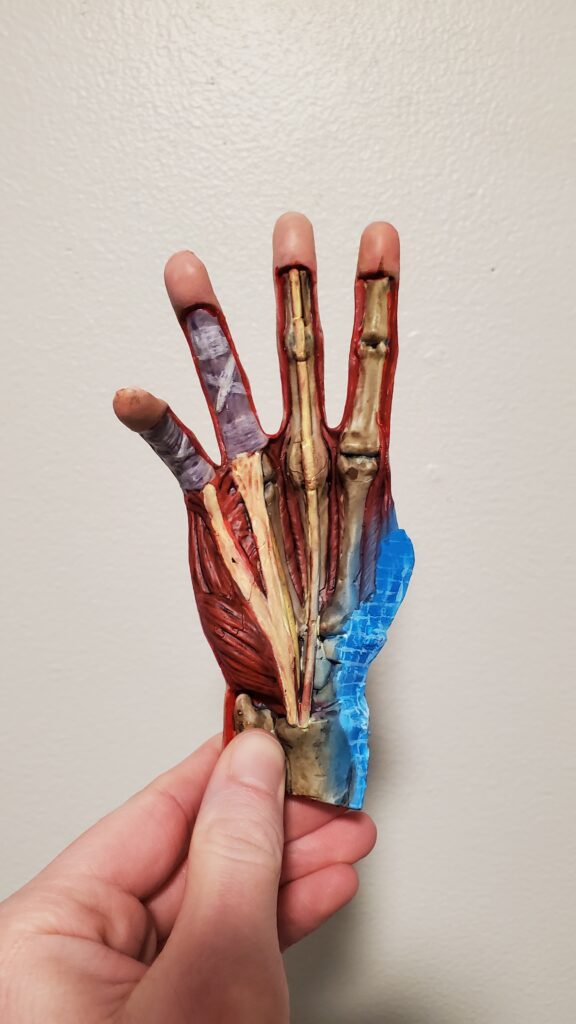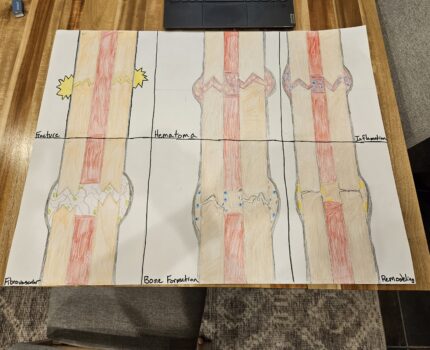This is a model I printed and painted, showing some of the muscles in the hand (among other tissues) that would be affected by muscle weakness and spasticity in a stroke victim.
Don’t mind the missing thumb. The print partially failed. To make do with what I had, I painted in a digital-like effect to make the model look like a hologram that bugged out for a moment.


